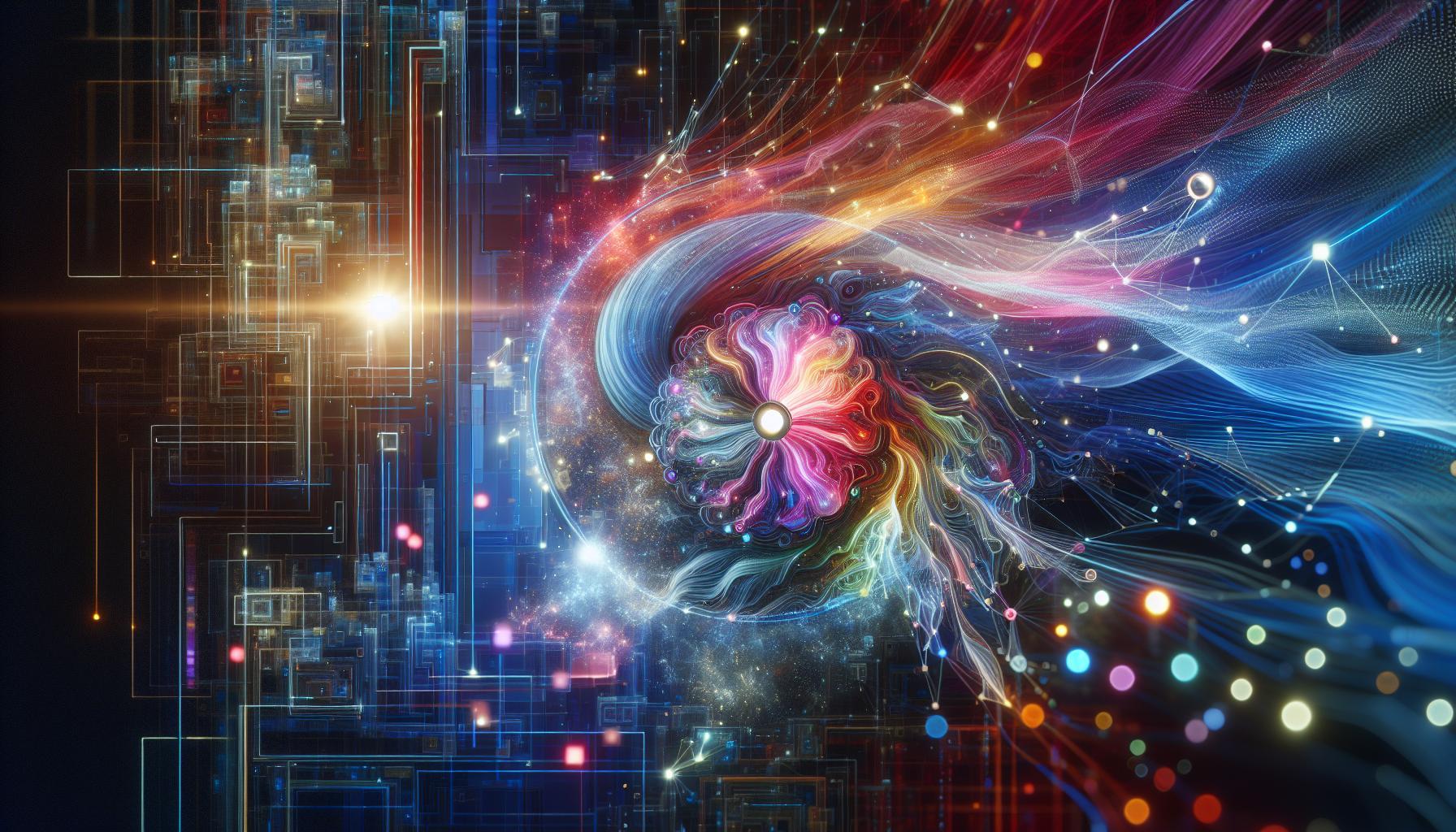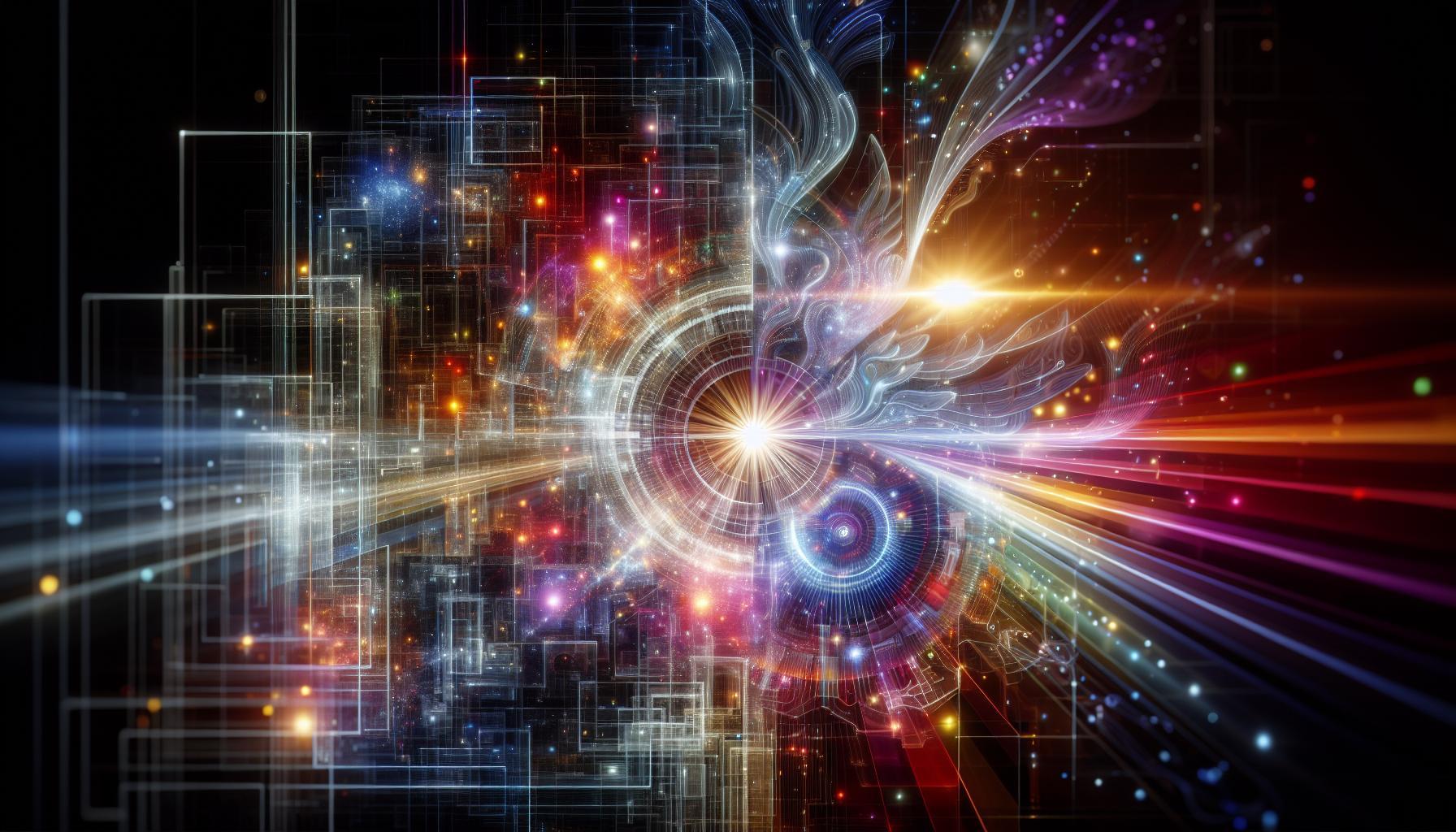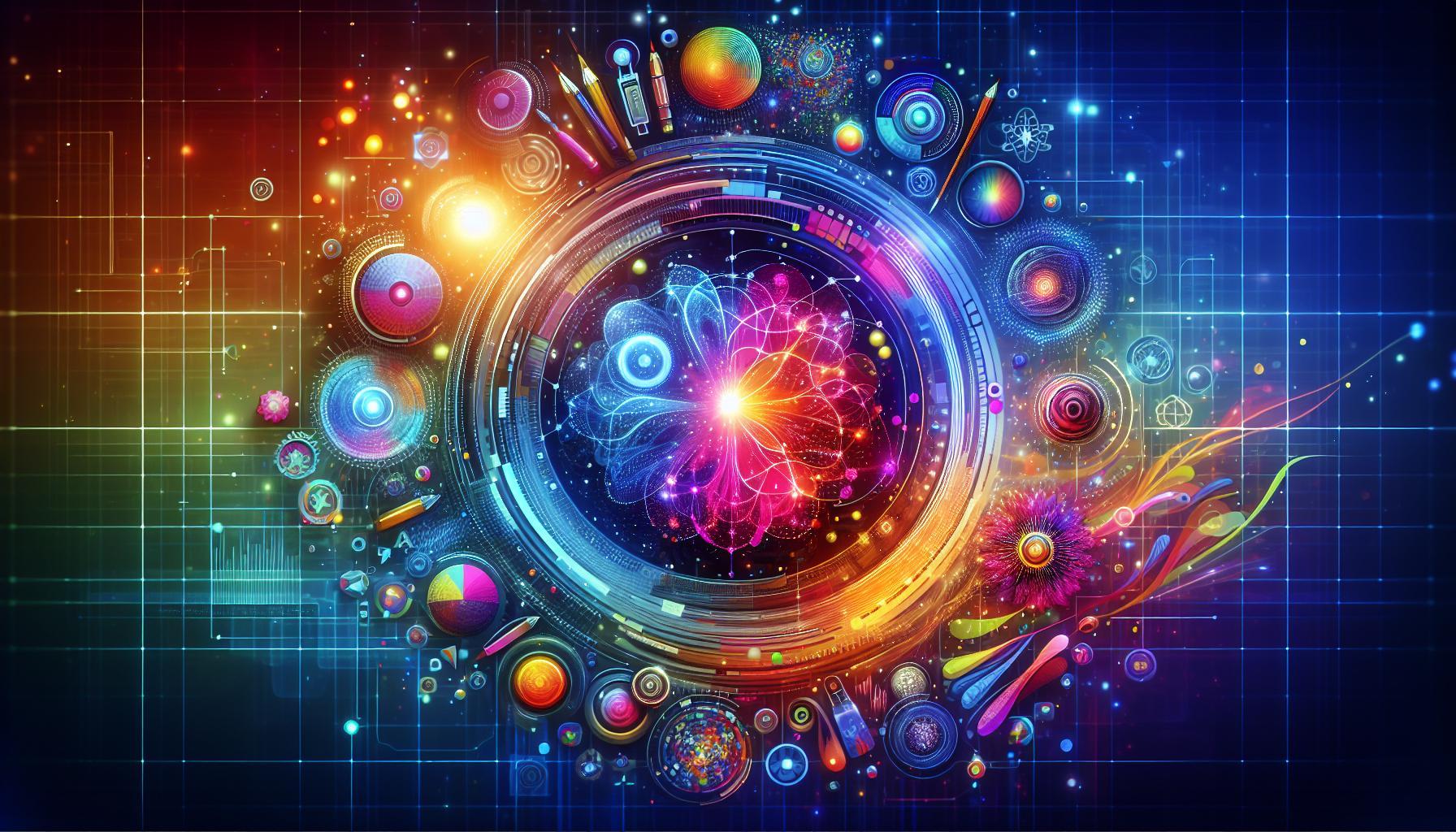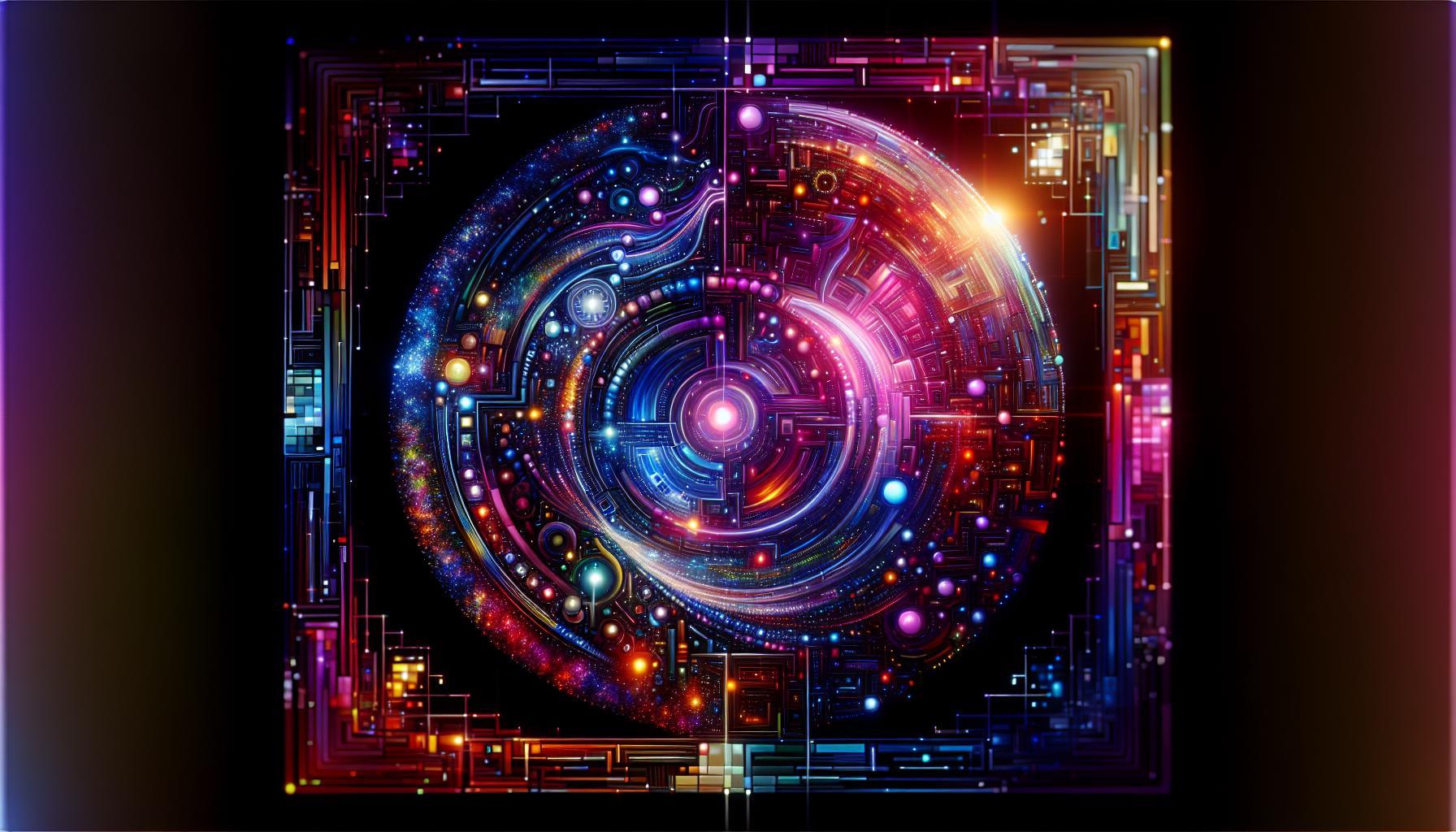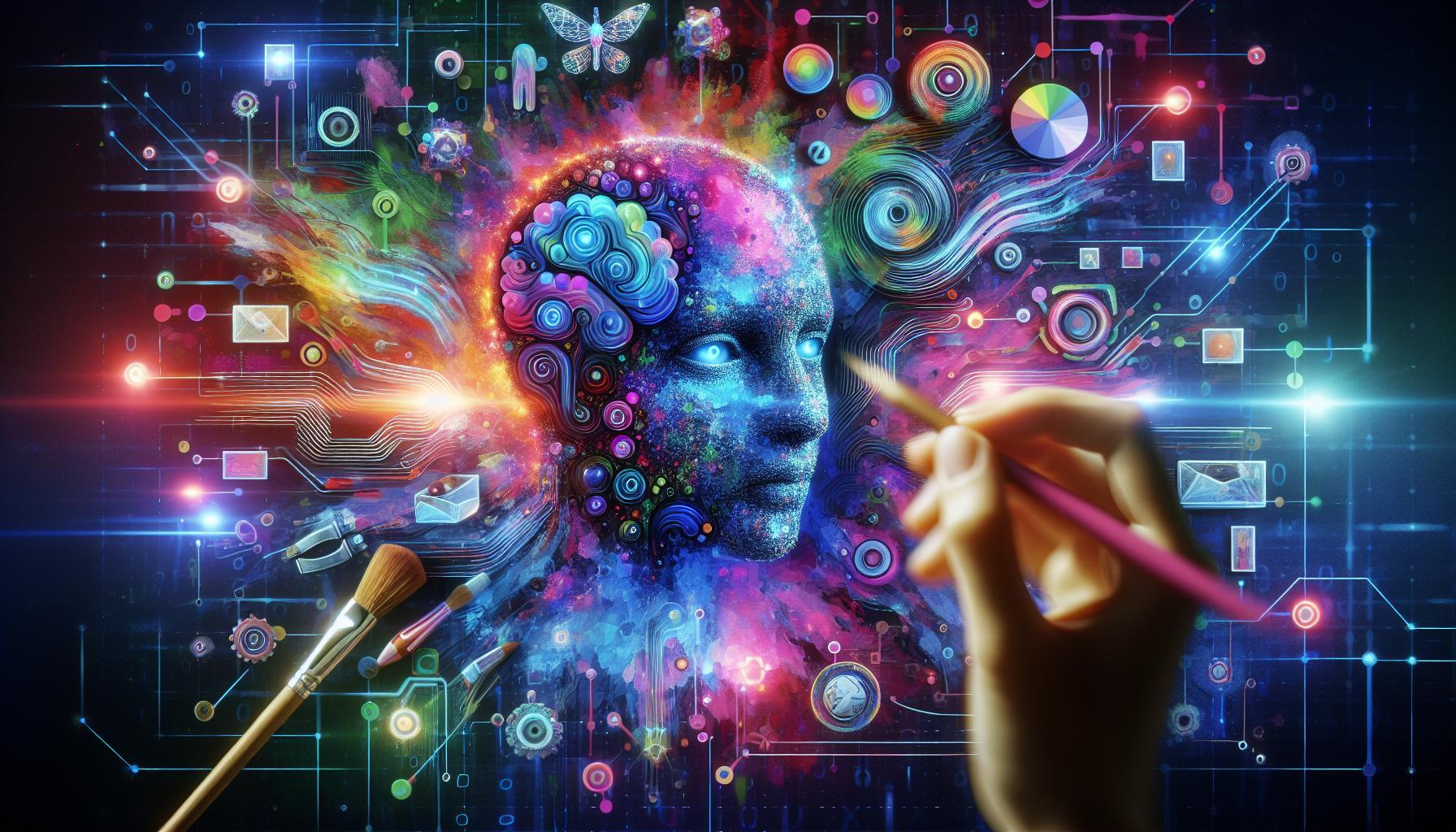Achieving a consistent visual style in Midjourney can be challenging, but mastering this skill is essential for creating cohesive and striking art. By leveraging techniques like style references and understanding various artistic movements, you can elevate your creations and maintain a uniform aesthetic that resonates with your audience. Explore these pro tips to ensure your designs stand out with harmony and character.
Understanding the Importance of Consistency in AI-generated Imagery
In the realm of AI-generated imagery, achieving a sense of harmony and consistency isn’t just a desired aesthetic-it’s a critical factor in creating compelling visual content. When artists and designers leverage tools like Midjourney, the consistency of style across various projects can enhance brand identity, improve audience engagement, and make the work more recognizable. Without consistency, images can appear disjointed and muddled, failing to convey the intended message or emotion effectively.
Why Consistency Matters
Understanding the importance of uniformity in AI-generated art can significantly impact your creative output. Here are some key reasons why maintaining a consistent style is essential:
- Brand Identity: For businesses and personal brands alike, visuals are often the first interaction a potential client has with your work. Consistent imagery helps establish recognition and builds trust.
- Audience Engagement: Viewers are more likely to engage with visual content that feels cohesive and intentional. A consistent style can evoke emotions and reinforce messages more effectively.
- Professionalism: A unified aesthetic suggests a level of professional polish that can set you apart from competitors, conveying a strong mastery of your craft.
- Artistic Integrity: For artists, consistency in style reinforces their unique voice and vision, making their work more meaningful and impactful.
Practical Steps for Achieving Uniformity in Midjourney
To achieve a consistent style in your AI-generated images, consider the following actionable techniques:
- Develop Clear Prompts: Start with well-defined prompts that include specific descriptors of the elements you want to present. Consistency often begins with clarity in your creative instructions.
- Experiment with Parameters: Use Midjourney’s various parameters to lock in stylistic choices such as color palettes, lighting, or composition. This will help ensure that each image adheres to your chosen style.
- Create a Style Guide: Document the key aspects of your desired aesthetic-such as color schemes, patterns, and character styles-and refer back to this guide during your creative process.
- Iterate and Refine: Use feedback loops by creating multiple drafts and choosing the best representations. Iterating allows you to refine your artistic direction and ensure that all outputs remain stylistically cohesive.
By incorporating these techniques into your workflow, you can effectively address the question of how to get consistent style in Midjourney and cultivate a signature aesthetic that resonates with your audience.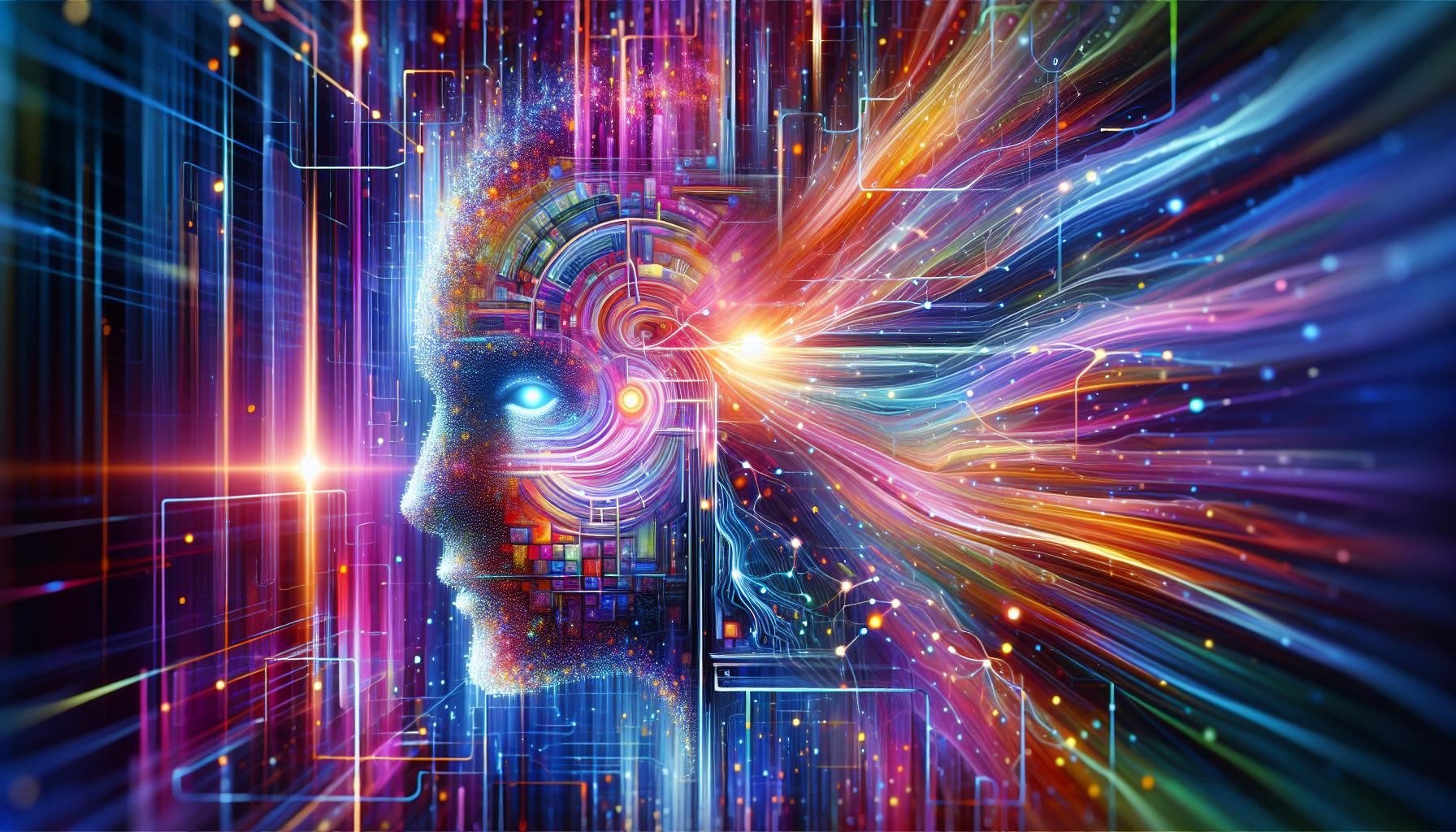
Key Techniques to Achieve a Uniform Visual Style
Achieving a cohesive look in your visuals can feel like a daunting task, especially when you’re utilizing a platform like Midjourney. The vibrant power of AI-driven image generation can sometimes lead to varied outputs that may lack a unified aesthetic. However, by mastering some essential techniques, you can create a strong, recognizable visual identity that resonates with your audience.
Establish a Color Palette
One of the most effective ways to maintain a uniform style is by defining a consistent color palette. This step is crucial in ensuring that every piece of artwork aligns with your desired aesthetic. Choose a set of primary and secondary colors that reflect the mood and tone of your project. Using tools like Adobe Color or Coolors can help you find complementary colors and create a harmonious palette.
- Primary Colors: Select 2-3 main colors that will dominate your visuals.
- Secondary Colors: Choose additional colors to use more sparingly, creating balance.
- Accent Colors: Pick 1-2 colors that can highlight specific elements in your designs.
Consistent Typography
Typography plays a vital role in the overall aesthetic of your visuals. Implementing a uniform font style across your designs creates a sense of continuity. When selecting fonts, consider using a combination of two or three styles at most-one for headings, one for body text, and possibly one for accents. This strategy not only applies to written text but can also influence the visual representation when generating images in Midjourney.
Utilize Specific Prompts
In Midjourney, the prompts you use can greatly influence the outcome of your images. To achieve a cohesive look, craft detailed prompts that incorporate your established color palette, typography, and overall thematic direction. For example, instead of a vague prompt like “a landscape,” try specifying elements such as:
| General Prompt | Improved Prompt |
|---|---|
| A city skyline | A vibrant city skyline at sunset with shades of purple and orange, featuring modern glass buildings in a minimalist style |
| A beach scene | A serene beach at dawn, emphasizing soft pastel colors and soft waves in a painterly style |
By incorporating specific elements into your prompts, you guide the AI toward generating visuals that not only reflect your style but also align cohesively with other outputs. Additionally, revisit and refine your prompts continuously, ensuring they are aligned with your evolving vision and the established visual characteristics.
With these strategies-establishing a color palette, maintaining consistent typography, and utilizing specific prompts-you can effectively navigate the creative process in Midjourney, resulting in a uniform visual style that captivates your audience.
Crafting a Cohesive Color Palette for Your Midjourney Creations
Crafting a visually appealing and coherent color palette can be a game-changer for your artworks in Midjourney. Colors evoke emotions and set the tone for your creations, making it essential to develop a strategy that fosters unity throughout your pieces. By mastering the art of color harmony, you not only enhance the aesthetic appeal of your work but also communicate a consistent message that resonates with your audience.
Understanding Color Theory
Before diving into your palette, familiarize yourself with the fundamentals of color theory. Understanding how colors interact can significantly impact the cohesion of your designs. Here are some key concepts to consider:
- Complementary Colors: These are colors that sit opposite each other on the color wheel, such as blue and orange. Using complementary colors can create striking contrasts that draw attention.
- Analogous Colors: These are colors that are next to each other on the color wheel. For example, red, red-orange, and orange form a calming and harmonious palette.
- Triadic Colors: This approach involves three colors evenly spaced on the color wheel, creating a vibrant and balanced composition.
Utilizing these principles can give you a solid foundation while designing a cohesive color palette for your Midjourney projects.
Building Your Palette
To create a consistent color scheme, select a primary color that embodies the mood you want to convey. From there, expand your palette by adding secondary and accent colors. Consider the importance of shades and tints; modifying the brightness and saturation of your base colors can produce a much richer and versatile palette. Here’s a simple structure to guide you:
| Color Category | Example Color | Purpose |
|---|---|---|
| Primary Color | #004b87 (Deep Blue) | Sets the main tone and mood. |
| Secondary Color | #f9c74f (Soft Yellow) | Adds warmth and excitement. |
| Accent Color | #f94144 (Vibrant Red) | Draws focus to key areas. |
Connect different elements of your artwork through these colors to maintain harmony throughout your Midjourney creations. This method not only facilitates consistency but also strengthens your overall storytelling.
With an understanding of color theory and a systematic approach to building your palette, you’re well on your way to achieving uniformity in style. Experiment continuously, and don’t hesitate to adjust your palette according to the themes and emotions you wish to convey across your visuals. Remember, the goal is to create a signature look that is both distinct and memorable, reinforcing your artistic identity within the Midjourney community.
Using Reference Images to Maintain Style Consistency
To achieve a uniform aesthetic in your artwork, leveraging reference images serves as a foundational technique that can greatly enhance style consistency. By carefully selecting reference material, artists can maintain a cohesive vision across multiple pieces, ensuring that their stylistic choices resonate throughout their portfolio. This approach is particularly effective when experimenting with platforms like Midjourney, as it allows artists to align their generated outputs with specific themes, moods, or visual languages.
Choosing the Right Reference Images
When selecting reference images, consider curating a collection that aligns with your intended style. The images should reflect the color palettes, lighting conditions, and composition techniques that define your artistic voice. Utilizing high-quality reference photos not only serves to inspire but also provides tangible examples of textures, tones, and styles that can be mimicked or adapted. Here are some tips for selecting effective reference images:
- Focus on Themes: Choose images that reflect the subjects or themes you are exploring.
- Consistent Quality: Ensure that all reference photos are similarly crisp and clear; this helps maintain visual coherence.
- Study Composition: Analyze how elements are arranged within the frame to create balance and focus.
- Acknowledge Lighting: Look for consistent lighting in your references to help unify the mood of your pieces.
Utilizing Reference Images in Your Workflow
Incorporating reference images into your creative process can be streamlined by creating mood boards or digital collages. This technique allows you to visualize how different elements work together while providing a quick reference for your ongoing projects. Platforms like Midjourney can be used to generate images that align with your chosen references, fostering exploration while retaining a clear stylistic direction. As you develop your unique style, regularly revisit your selected references to reevaluate and refine your artistic approach.
| Aspect | Importance | Best Practices |
|---|---|---|
| Theme | Ensures stylistic alignment | Select images with similar subjects |
| Color Palette | Unifies the overall look | Choose consistent color schemes |
| Lighting | Sets mood and depth | Use images with similar lighting conditions |
Ultimately, the strategic use of reference images enhances not only your ongoing projects but also your overall growth as an artist. By frequently incorporating these visuals into your work routine, you’ll find yourself more adept at producing cohesive and visually engaging artworks that resonate with your distinct style.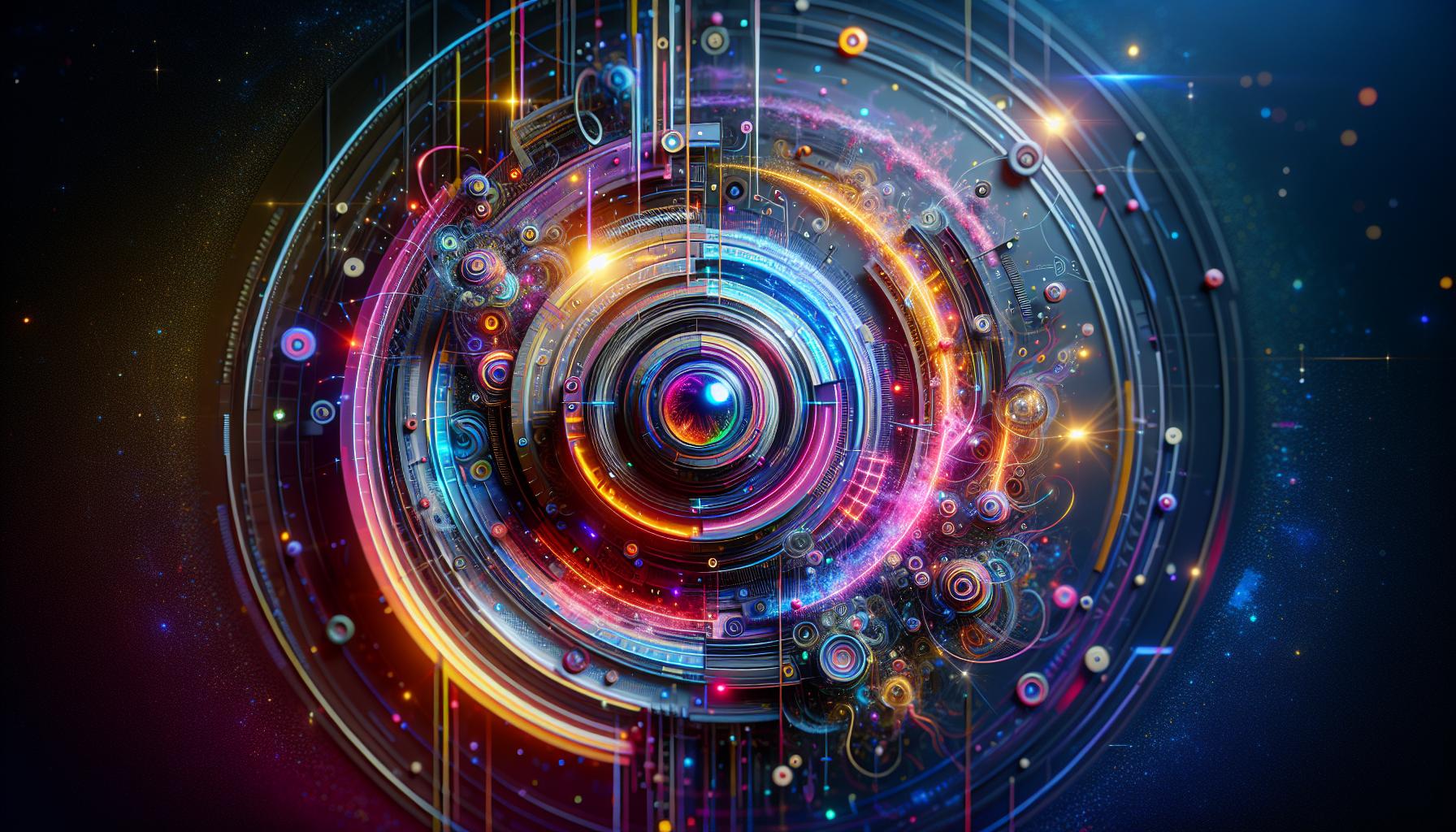
Adjusting Parameters for Greater Uniformity Across Projects
Adjusting parameters in Midjourney can unlock the power of uniformity across your creative projects, ensuring your work resonates with a cohesive identity. Consistency is key in effective visual communication, and knowing how to fine-tune your parameters is integral to achieving that sought-after style. Whether you’re designing for personal branding, a marketing campaign, or a visual portfolio, applying the right techniques can elevate your initial concepts into polished, professional results.
To achieve greater uniformity, it’s essential to focus on the following parameters:
- Aspect Ratio: Setting a consistent aspect ratio across all images helps to create visual harmony. Consistency in dimensions also allows for easier synchronization when used in presentations or social media layouts.
- Color Palette: Utilizing a predefined color palette can anchor your pieces. By sticking to certain hues and shades, you can evoke specific emotions and evoke a recognizable look.
- Style and Vibe: Identify a particular style (e.g., minimalistic, vintage, futuristic) and apply it uniformly across images. Use descriptive language that conveys the same vibe consistently in your prompts.
Parameter Settings Table
| Parameter | Suggested Value | Impact on Uniformity |
|---|---|---|
| Aspect Ratio | 16:9 | Ensures all images have the same framing |
| Color Palette | Hex codes e.g., #FF5733, #C70039 | Creates a common emotional thread |
| Style | Choose one e.g., “Vintage Film” or “Modern Minimalist” | Makes the project visually coherent |
By mastering these adjustments in your Midjourney prompts, you can craft a consistent style that permeates across all your creative outputs. Remember that uniformity does not mean sacrificing creativity-rather, it’s about channeling your artistic vision through a defined lens. With the right adjustments, you’ll produce a body of work that not only stands out but also feels interconnected, reinforcing your brand or message vibrantly and effectively.
The Role of Prompts in Shaping Consistent Visual Outcomes
The intricacies of creating visually coherent artwork in Midjourney hinge significantly on the precision and clarity of the prompts used. Crafting a well-structured prompt is not merely a technical step; it serves as the backbone of your visual creation process. Inconsistent or vague inputs can lead to a frayed artistic narrative, causing visuals to diverge from the intended style. Therefore, understanding how to articulate prompts becomes fundamental for artists seeking uniformity in their output.
Why Prompts Matter
Prompts act as the guiding voice for the AI, dictating every element from style to composition. Here are several key reasons why prompts are crucial in achieving consistent visual outcomes:
- Clarifying Intent: A well-defined prompt allows the artist to articulate their vision, resulting in images that more closely align with expectations.
- Detail Control: Including specific descriptors such as color schemes, moods, or styles empowers the AI to interpret and replicate desired elements consistently.
- Setting Parameters: By establishing boundaries within the prompt, artists can ensure that subsequent creations maintain a recognizable aesthetic and theme.
Structuring Effective Prompts
To harness the full potential of prompts, consider implementing the following strategies:
- Be Specific Yet Flexible: Aim to provide sufficient detail without overwhelming the AI. For instance, instead of saying “a forest,” specify “a lush, green forest during sunrise with golden rays streaming through.”
- Iterate and Refine: After generating initial images, use feedback to refine your prompts further. For example, if the colors are inconsistent, adjust your prompt to emphasize your preferred palette more clearly.
- Use Thematic Keywords: Including consistent thematic keywords across multiple prompts can tie your creations together. If you want a series of images featuring a ‘mythical creature,’ consistently reference this theme to foster uniformity.
| Prompts Example | Visual Outcome Focus |
|---|---|
| “A serene lake surrounded by mountains at dusk, reflecting pastel colors.” | Beautiful gradient in sky and water, consistent tranquil theme. |
| “A vintage car parked under cherry blossoms in spring.” | Maintained retro aesthetic and seasonal elements. |
| “An astronaut exploring a neon-lit alien city.” | Futuristic design with specifics indicating vibrant colors and atmosphere. |
By leveraging the capabilities of well-crafted prompts, artists can navigate the fickle nature of AI-generated imagery, ensuring that their work remains cohesive and artistically aligned. Ultimately, the strategic use of prompts can unlock new levels of creativity, serving as both a compass and a canvas for consistent visual storytelling.
Experimenting with Artistic Filters and Styles for Coherence
Consistent artistic expression can be a challenging pursuit, especially in the digital realm where varying styles can clash. Utilizing artistic filters and styles in Midjourney not only enhances your ability to convey a unified vision but also empowers you to experiment with creativity while maintaining coherence across your work. The importance of coherence in artistic projects cannot be overstated; it plays a crucial role in how audiences perceive and engage with your creations. By applying specific filters and styles strategically, you can significantly elevate your work’s overall integrity.
Choosing the Right Filters
Before diving into the experimentation phase, it’s essential to identify the types of artistic filters that align with your desired outcome. Below are various filter categories you might consider:
- Color Filters: Alter color palettes to evoke specific emotions or themes.
- Texture Filters: Introduce different textures to create depth, such as grainy effects that mimic film photography.
- Brush Stroke Styles: Adopt styles reminiscent of different painting techniques, like watercolors or oil paint.
- Cinematic Styles: Use filters that can replicate the look of classic films or modern cinematography.
Making a conscious choice about the filters you employ can enhance the narrative consistency within your artwork. For example, if you are creating a series focused on melancholy themes, employing cooler colors and softer textures across all pieces can help reinforce that emotional thread.
Techniques for Achieving Uniformity
After selecting your filters, it’s crucial to apply them thoughtfully. Here are some techniques to ensure your results maintain artistic uniformity:
| Technique | Description |
|---|---|
| Consistency in Application | Apply the same filter across all pieces or adjust settings minimally to retain the overall aesthetic. |
| Curated Color Palettes | Create or use predefined color palettes that align with your artistic style to maintain consistency. |
| Thematic Cohesion | Ensure all artwork adheres to a thematic concept that justifies the use of certain styles, enhancing the narrative. |
Implementing these techniques not only preserves the integrity of your work but also helps viewers connect the dots between individual pieces, ultimately leading to a more seamless experience. Keeping a record of your adjustments can serve as a valuable reference, ensuring that you remain aligned with your artistic vision.
Experimentation is an essential aspect of growth in artistry. As you become more comfortable with applying various filters in Midjourney, take creative risks while remaining mindful of your established style. Create a series of test pieces where you can explore different combinations of filters and styles, always referring back to your cohesive theme. This method can provide enlightening insights into how various attributes interact, allowing you to fine-tune your approach for optimal results.
Analyzing Successful Midjourney Projects: Lessons in Consistency
In the realm of digital art, achieving a consistent style can transform an artist’s portfolio from a collection of random works into a cohesive body that tells a story. Successful Midjourney projects illustrate this principle vividly, showing how consistency not only enhances aesthetic appeal but also strengthens brand identity. By analyzing these projects, we can draw valuable lessons on how to harness Midjourney’s capabilities to achieve uniformity in your artistic output.
Key Strategies for Achieving Uniformity
- Defining a Color Palette: One of the pivotal aspects of consistency is a well-chosen color scheme. Many accomplished artists create a unique palette that reflects their artistic voice. This can mean sticking to a few primary colors or utilizing complementary hues that evoke specific moods. For instance, a project centered around nature might leverage shades of green, brown, and blue to create a unified, tranquil feeling.
- Utilizing Repeatable Elements: Incorporating consistent elements such as specific shapes, patterns, or objects can significantly enhance recognition. Successful Midjourney projects often showcase repeated motifs, allowing viewers to identify the artist’s unique style at a glance. Think of designers who frequently use geometric shapes or similar textures to create connection across works.
- Crafting Distinctive Lighting Techniques: Light can dramatically influence the perception of style. Artists who utilize consistent lighting, whether it’s soft, diffused light or stark contrast, can create a signature look that resonates throughout their portfolio. This approach not only helps establish uniformity but also adds depth to the individual pieces.
- Maintaining Subject Matter Consistency: Focusing on a specific theme or subject matter across projects reinforces a cohesive aesthetic. For example, an artist dedicated to surreal landscapes can develop a recognizable style that engages audiences interested in that genre. This thematic focus allows for evolution within a consistent framework.
Real-World Examples of Cohesive Midjourney Projects
Examining successful case studies reveals the power of these strategies in action. Consider an artist named Sarah who uses Midjourney to create dreamy fantasy scenes. By employing a consistent color palette that predominantly features soft pastels and ethereal lighting, her works not only appear interconnected but also elicit emotional responses from her audience.
| Project Name | Color Palette | Motifs | Lighting Style |
|---|---|---|---|
| Dreamscapes | Soft Pastels | Clouds and Stars | Soft vs. Bright Contrast |
| Mystical Flora | Earthy Tones | Flowers and Forest Elements | Diffused |
| Urban Legends | Muted Colors | Street Art and Graffiti | High Contrast |
These examples highlight how integrating a cohesive color palette, repeated motifs, and a uniform lighting technique creates a recognizable signature style in Midjourney. By observing and adopting these lessons, any artist can move towards achieving a more consistent aesthetic that resonates within the digital art community.
Frequently Asked Questions
How to Get Consistent Style in Midjourney? Pro Techniques for Uniformity?
To achieve a consistent style in Midjourney, leverage prompts, references, and specific style codes. Start by using clear prompts that describe the desired aesthetics and emotional tone.
Incorporating elements like color schemes and textures in your prompts will help maintain uniformity across images. Additionally, using style codes or referencing existing images can enhance coherence. For more strategies, check our article on art styles.
What tools can help maintain uniformity in Midjourney images?
Several tools and techniques can help ensure uniformity in Midjourney. Using consistent prompts, references, and saved images helps align outputs.
Moreover, style transfer techniques can also offer a way to replicate visual themes across different pieces. Experimenting periodically with style references enables users to adapt and refine their artistic outputs effectively.
Can I use reference images for consistent style in Midjourney?
Yes, using reference images is one of the best ways to get a consistent style in Midjourney. It allows the AI to mimic color schemes, textures, and compositions effectively.
By selecting well-defined reference images, you guide the AI towards the desired aesthetic. This keeps your project visually cohesive and helps in creating harmonious sets of images.
Why does consistency matter in AI-generated art?
Consistency in AI-generated art creates a unified visual experience. It helps convey a coherent message or theme across a series of works.
This consistency is especially crucial for branding, storytelling, or project presentations, where viewers typically expect a certain level of uniformity. Without consistency, the final output may feel disjointed, confusing, or unprofessional.
What are some advanced techniques for achieving consistency in Midjourney?
Advanced techniques for achieving consistency in Midjourney include using style presets and modified prompts. Customizing your parameters based on previous successful renders can enhance uniformity.
Combining different artistic influences into your prompts while retaining core characteristics can also be effective. This approach expands your creative possibilities while ensuring each piece fits within the larger visual framework.
How can I ensure color harmony across images in Midjourney?
Ensuring color harmony can be achieved by using specific color palettes consistently across your prompts. Mentioning exact color schemes in your descriptions aids in maintaining visual coherence.
Additionally, you might consider using color theory principles to guide your selections, as they can elevate the aesthetic quality of your work. Referencing existing art movements or styles can also provide a foundational palette to work from.
What role do style codes play in Midjourney?
Style codes are crucial for defining specific aesthetic attributes in Midjourney. They help in achieving desired themes and nuances systematically across different projects.
By using these codes, you can communicate your style preferences directly to the AI, enabling it to produce results that are closer to your vision. This not only promotes uniformity but also enhances the overall efficiency of your creative process.
Concluding Remarks
In conclusion, achieving consistent style in Midjourney is not just about following a set of techniques-it’s about understanding the nuances of the AI and using them creatively to express your vision. By mastering prompts, leveraging the power of keywords, and experimenting with parameters like aspect ratios and styles, you can produce stunning visuals that resonate with your intended aesthetic.
Remember, the learning process is a journey in itself. Don’t hesitate to take risks and try out new combinations, as each attempt is an opportunity to refine your style further. Engage with the community, gather feedback, and immerse yourself in diverse inspirations to keep your creativity flowing.
We encourage you to put these strategies into practice and explore the vast possibilities that Midjourney offers. Your unique perspective can lead to incredible creations-so dive in, let your imagination soar, and continue your journey toward a cohesive and captivating visual style. Happy creating!

